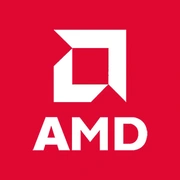AMD E2-3200

AMD E2-3200: A Comprehensive Review of an Outdated Budget Processor
April 2025
1. Key Features: Architecture and Performance
Codename and Manufacturing Process
The AMD E2-3200 processor, released in 2011, is based on the Llano microarchitecture with a 32 nm manufacturing process. This hybrid chip combines a CPU and integrated graphics in the form of the Radeon HD 6370D. By 2025, such specifications are considered archaic: modern processors utilize 5–7 nm manufacturing processes and more advanced architectures (like AMD's Zen 4 and Intel's Intel 7).
Cores and Performance
- 2 cores, 2 threads (no support for Hyper-Threading or SMT).
- Clock speed: 2.4–2.5 GHz (without Turbo Boost).
- Geekbench 6: 291 (Single-Core), 521 (Multi-Core). For comparison, even the budget Intel Celeron G6900 (2022) scores around ~1500/2500 points.
Integrated Graphics
The Radeon HD 6370D is a weak point in 2025. It supports DirectX 11 and can handle video up to 1080p, but it is unsuitable for gaming. For instance, in CS:GO at low settings, you can expect around 20–25 FPS.
Key Features
- Low power consumption (TDP 65 W).
- Integrated GPU, eliminating the need for a discrete graphics card.
- Affordability: a new processor (if found for sale) costs $25–35.
2. Compatible Motherboards
Socket and Chipsets
The E2-3200 uses Socket FM1 (2011). Suitable chipsets include:
- A55/A60/A75 (support for USB 3.0, SATA III 6 Gbps in A75).
Selection Tips
In 2025, new motherboards for FM1 are no longer produced. On the second-hand market, prices for used models range from $15 to $30. If by chance new stock is found (rare warehouse surplus), they cost $40–60.
Recommendations
- Look for motherboards with the A75 chipset for SATA III support (relevant for SSDs).
- Check for HDMI/DVI ports if you plan to use the integrated graphics.
3. Supported Memory
Memory Types
The processor works only with DDR3 (up to 1600 MHz). Modern standards DDR4/DDR5 are not supported.
Configurations
- Maximum capacity: 16–32 GB (depends on the motherboard).
- Modes: Dual-Channel. For office tasks, 8 GB (2×4 GB) is sufficient.
Practical Example
Installing an SSD and 8 GB of DDR3 turns the E2-3200 into a decent PC for document work and browsing.
4. Power Supply Units: Recommendations
Power Consumption
With a TDP of 65 W, a system based on the E2-3200 consumes ~100–120 W under load (considering SSD, RAM, and fans).
Choosing a PSU
- Minimum power: 300 W.
- Recommended models: EVGA 400 W1 (around $40) or Corsair CV450 ($50).
Important
Avoid cheap noname power supplies — they can damage components.
5. Pros and Cons
Pros
- Extremely low price.
- Energy efficiency.
- Presence of integrated GPU.
Cons
- Outdated architecture.
- No support for modern instructions (AVX, AES-NI).
- Weak multitasking performance.
6. Use Cases
Office Tasks
- Working with Word, Excel, and browsing (up to 10 tabs).
Multimedia
- Watching videos in 1080p (YouTube, Netflix).
- Basic editing in Shotcut or DaVinci Resolve (with lag).
Gaming
- Only older titles: Half-Life 2, Minecraft (without shaders).
Real-Life Case
A user built a PC with the E2-3200 for their parents: internet, Zoom, and document printing. Adding an SSD and 8 GB of DDR3 made the system responsive.
7. Comparison with Competitors
Intel Pentium G2020 (Ivy Bridge, 2013)
- Geekbench 6: 350/650.
- Pros: higher IPC, support for AES-NI.
- Cons: Intel HD graphics are weaker.
AMD A4-5300 (Trinity, 2012)
- Geekbench 6: 270/500.
- Pros: newer architecture.
Conclusion
The E2-3200 lags behind even older Intel budget models but holds its own in price.
8. Practical Assembly Tips
- Motherboard: Look for models with USB 3.0 (A75) for fast file transfers.
- Memory: 8 GB of DDR3 is the optimal choice.
- Storage: An SSD is essential (for example, Kingston A400 240 GB — $25).
- Cooling: The stock cooler is sufficient.
Example Build
- CPU: AMD E2-3200 ($30).
- Motherboard: ASUS F1A75-M ($45, new).
- Memory: 8 GB DDR3 ($20).
- SSD: 240 GB ($25).
- PSU: EVGA 400 W1 ($40).
- Total: ~$160.
9. Final Verdict: Who Should Consider the E2-3200?
This processor is a choice for:
1. Enthusiasts building retro PCs.
2. Users with minimal needs (office, internet).
3. A temporary solution on a limited budget.
Why You Shouldn't Buy It?
Even new processors like the Intel Celeron N5100 ($80) offer 3–4 times higher performance and support modern technologies (DDR4, USB 3.2).
Conclusion
The AMD E2-3200 in 2025 is a relic of the past. It can only be recommended in exceptional cases: building a "digital type" PC for a grandparent or as a backup system. For any serious tasks, look for more modern solutions.
Basic
CPU Specifications
Memory Specifications
GPU Specifications
Benchmarks
Compared to Other CPU
Share in social media
Or Link To Us
<a href="https://cputronic.com/index.php/cpu/amd-e2-3200" target="_blank">AMD E2-3200</a>